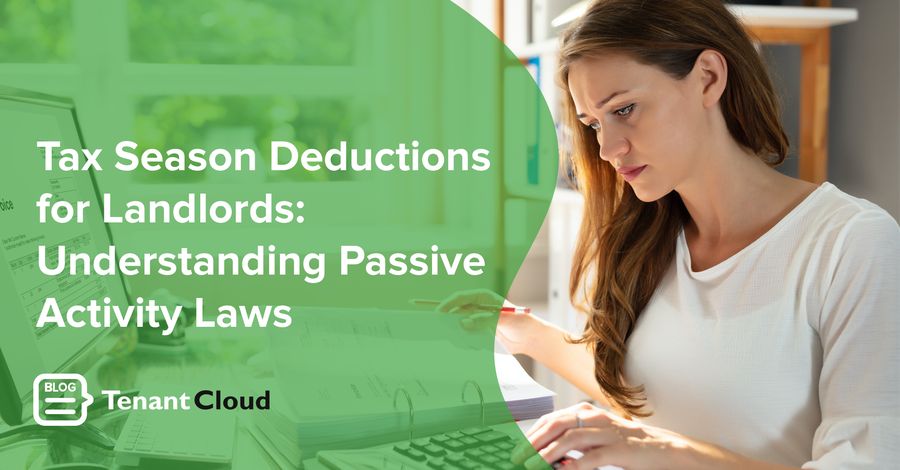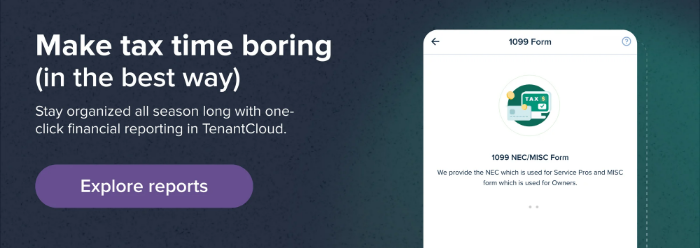Understanding tax implications, especially as a new landlord, can help you strategically approach your taxes. While the real estate rental tax landscape is complicated and easy to gloss over, one important tax law you'll want to understand is passive activity loss (PAL). Since most real estate rental income is considered passive income, this law will likely apply to you, and if it doesn't, you should know why. So let's dive in!

Active versus Passive
Active income is income you earn through continual work, like a salary, wages, and self-employment income. If you stop working, you generally stop receiving money. Under this concept, time equals money. Passive income, on the other hand, is money that comes to you when you aren't "actively" earning it. You may have initially worked to start an income flow (or simply invested money to start it), but the work you put in after the initial investment period is minimal or nonexistent.
When it comes to taxes in general, you can deduct only passive losses against passive income and active losses against active income. The Internal Revenue Service (IRS) generally considers rental real estate a passive activity, although there is an exception, which we'll get to. This means if your real estate rental expenses are greater than your rental income for the year - and most real estate rental properties don't turn a profit in the early years - you may have to wait for future tax years to claim your passive losses against future passive profits. While you may not be able to benefit from your deductions in the year they incur, the IRS allows you to roll them over from year to year until you are able to use them. If, however, you have other passive income from other sources, you can use that to offset your rental real estate passive losses in the year you incur them.
If, for example, you have a full-time job outside the real estate realm and you have a side business leasing your rental properties, you probably won't be able to deduct your passive real estate losses against your active income. Because of this type of situation, some landlords prefer to qualify their rental real estate business as an active activity to deduct rental real estate losses against other active income. Let's look at how you can qualify your rental real estate business as an active activity and what deductions you can claim if you can't.
Related: Tax Deductions For Landlords: Every Landlord's Tax Deduction Guide
Material Participation in Your Business as a Real Estate Professional
Qualifying as an Active Activity
As we mentioned earlier, most income from real estate rentals is considered passive and is subject to the PAL laws, but there are exceptions. If you've "materially participated" as a real estate professional in your rental real estate business, then the IRS considers your income from that business active income. To qualify as a real estate professional, more than half of your work for the year must be in real estate property activity. Renting real estate fits this category.
In addition to qualifying as a real estate professional, you must work at least 750 hours in your "trades and businesses." This 750-hour requirement is tricky. Each one of your properties requires 750 hours of work unless you elect to clump all your rental properties together as a single activity. If you have a lot of rental properties, electing to make them a single activity will greatly reduce the amount of time you must work; however, keep in mind that once you clump your properties together as a single activity, you can't unclump them later if another tax arrangement better suits your situation.
If you're married filing jointly, only one of the two of you must meet the criteria listed above, even if your spouse doesn't technically own the property. The qualifying person would need to meet the 750-hour threshold and spend more than half of his or her work time in real estate business activities. This means you can't add your hours to your spouse's hours to meet the 750-hour threshold. You or your spouse need to meet it independently. Be sure that you or your spouse document in detail the time spent on your real estate rental business. No one wants to be audited only for the auditors to find insufficient proof of business activity. A great place to store your work log is on TenantCloud's calendar. Not only does the TenantCloud calendar help you keep track of your time, but it automatically fills your calendar with tasks and reminders you won't want to forget, like "lease 12 will end in 30 days."
Deductions When Your Property Remains a Passive Activity
If you or your spouse don't qualify as real estate professionals - say you work a full-time job outside the real estate industry, your rental real estate business will be considered a passive activity. However, if you actively participate in your real estate rental business even if the business isn't considered an active activity, you're eligible to deduct up to $25,000 against your active income. To qualify as an active participant who isn't a real estate professional, you must own at least 10% of the rental properties and be making management decisions. In order to claim the full $25,000, your adjusted gross income (AGI) must be $100,000 or less. If your AGI falls between $100,000 and $150,000, you'll still be able to claim some of this $25,000, but the benefit will phase out at $150,000. (These amounts will be lower if you're married filing separately.)
Many rules have exceptions, and these tax laws are no different. If you have additional questions about how this tax law and active versus passive income apply to you, be sure to reach out to a tax professional.
Related: Form 1040, Schedule E, Supplemental Income and Loss: Tax Season 2020
What other tips do you have for landlords at tax time? Leave a comment below. We'd love to hear your thoughts or pieces of advice on this topic.
The Secret to an IRS Audit : TenantCloud Property Management Software








